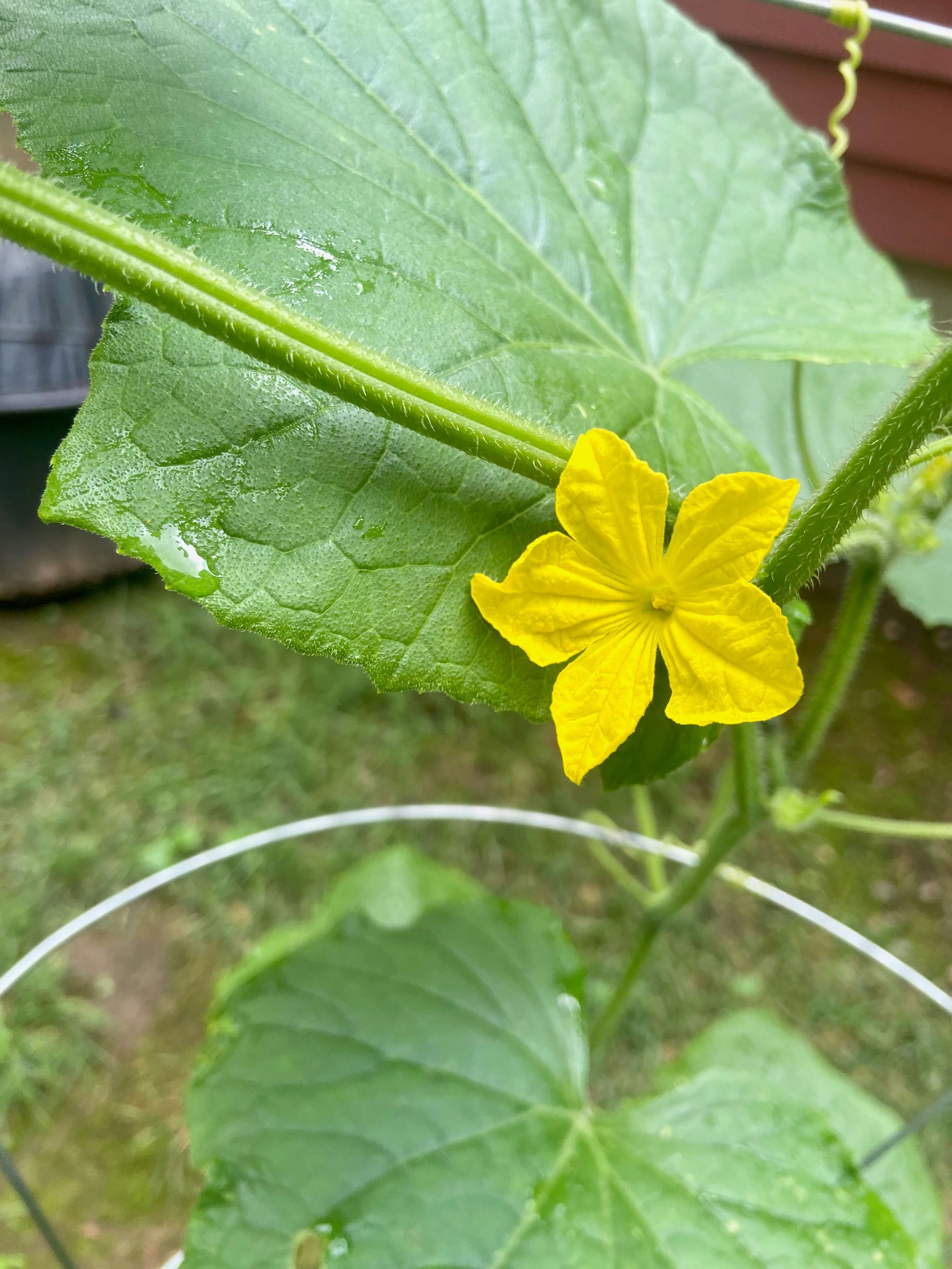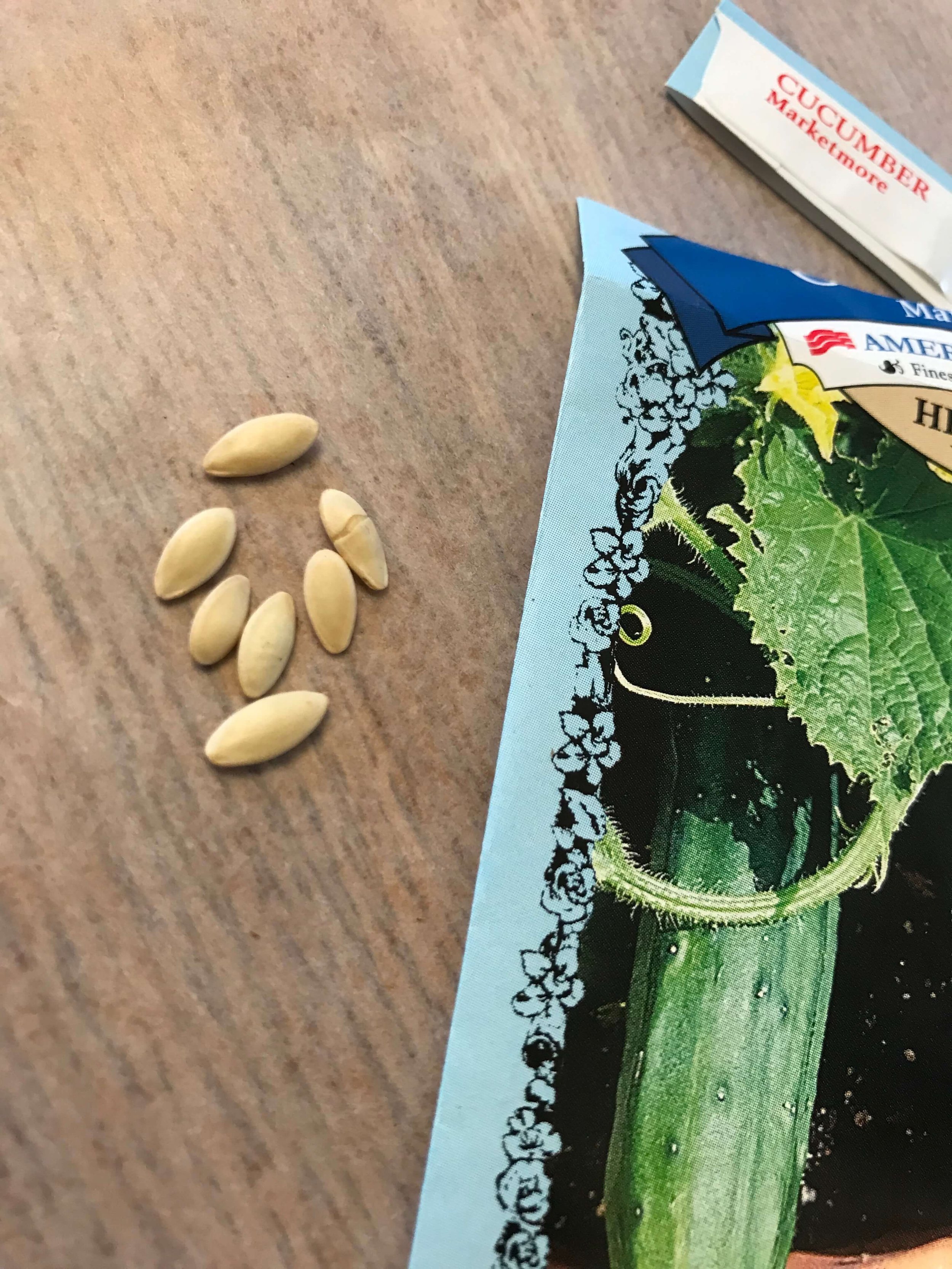Boost Your Cucumber Harvest with This Simple Trick
Boost Cucumber Production
I’m excited to share a simple, yet incredibly effective gardening hack that I’ve been using to dramatically increase my cucumber harvest. And the best part? This tool costs just under a dollar and can be found practically anywhere; in fact, you might already have one at home. It’s not a fancy gadget or a chemical enhancer—it's a simple paintbrush.
If you're like me, tending to your garden is a labor of love, but sometimes our buzzing friends, the pollinators, might not be visiting as often as we need them to. This is where a regular, soft-bristled paintbrush comes into play, especially handy for helping pollinate cucumber plants.
The items listed are accompanied by affiliate links, meaning I earn a small commission if a purchase is made through my links. This has no impact on the cost to the consumer. I link to products this way whenever possible, and it has no bearing on the products I choose to review or recommend.
Understanding Cucumber Flowers: Male vs. Female
Before I explain the paintbrush technique, let’s delve into a little botany. Cucumber plants have two types of flowers: male and female. Recognizing the difference between these two is crucial for effective hand-pollination.
Male Cucumber Flowers:
Appearance: Male flowers are usually the first to appear on the cucumber plant. They have a thinner, more delicate stem that doesn't swell at its base.
Position: You'll often find them clustered together, growing on longer stalks directly from the vine.
Pollen Source: At the center of each male flower is a structure called the stamen, which holds the pollen. This is typically prominent and coated with bright yellow pollen grains.
Male Flower
Female Cucumber Flowers:
Appearance: Female flowers generally appear slightly later than the males. They can be identified by their thicker stem that has a small, cucumber-shaped swelling at the base. This is the ovary which, after successful pollination, will grow into a cucumber.
Position: Female flowers are usually found less abundantly and may be spaced further apart on the vine than male flowers.
No Pollen: Unlike male flowers, female flowers have a central structure called the stigma, which does not have pollen. The stigma is designed to receive pollen.
Female Flower
Step-by-Step Guide to Hand-Pollinating with a Paintbrush
Step 1: Find the Right Time
Early morning is the best time for pollination, as the flowers are open and most receptive.
Step 2: Identify the Flowers
Evaluate your cucumber vines and first identify the male flowers, which are loaded with pollen. Then, locate the female flowers, ready to receive that pollen.
Step 3: Collect Pollen
Gently swirl your paintbrush inside the center of a male flower to collect the yellow pollen grains on the bristles. Make sure your brush gets a good amount of pollen.
Step 4: Transfer Pollen to Female Flower
Move to a female flower and delicately dab the paintbrush onto the center stigma of the flower. The goal is to mimic the natural process of pollination, transferring the pollen from the male flower to the female.
Step 5: Repeat
Continue this process, going from male to female flowers throughout your garden. Each female flower needs to be visited with pollen to ensure fruit development. Do this every week or 2 to increase your cucumber yield.
Hand pollination.
Why Use a Paintbrush?
You may be wondering why a paintbrush is necessary when nature has its own pollinators. While it's true that bees and other insects play a major role in pollinating our plants, sometimes they just need a little extra help. Factors such as weather conditions, low insect populations, and the use of pesticides, can hinder natural pollination, resulting in a lower yield. By hand-pollinating with a paintbrush, you are ensuring that each flower receives the necessary pollen for fruit development.
Another benefit of using a paintbrush is that it allows for more control and precision in pollination. You can target specific flowers and make sure they are properly pollinated, rather than relying on chance visits from insects.
Paintbrushes soft bristles are perfect for picking up and holding onto fine pollen grains without damaging the delicate parts of the flower. Plus, it’s an incredibly inexpensive tool that you can reuse throughout the gardening seasons.
Hand-pollinating might sound like a bit of extra work, but it’s a fun, relaxing way to interact with your plants. More importantly, it can significantly increase the yield of your cucumber plants, especially if natural pollinators are scarce in your area.
RELATED: The Best and Worst Flowers for Attracting Pollinators
So next time you’re at the dollar store, pick up a small paintbrush, and give this method a try. Not only will you boost your cucumber harvest, but you’ll also get a closer look at the fascinating process of plant reproduction.
Pin it for Later!













